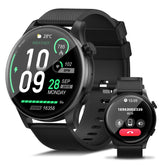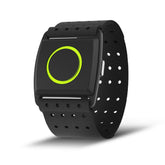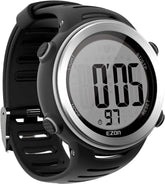Calorie Burn Calculation: Key Factors and Accuracy
Understanding how many calories you burn during a workout is essential for tailoring fitness plans, managing weight, and optimizing performance. However, calorie burn estimates can vary widely, from generic online calculators to advanced fitness tracker data. In this guide, we’ll break down the key factors influencing calorie expenditure, why accuracy matters, and how to ensure your calculations reflect reality.
The Basics of Calorie Burn Calculation
Calories burned are a measure of the energy your body expends during activity, influenced by both external factors (what you do) and internal factors (who you are). The formula is complex, but these key factors provide a foundation:
1. Body Composition
- Weight and Muscle Mass: Heavier individuals and those with more muscle burn more calories at rest and during movement (muscle is metabolically active tissue).
- Age and Gender: Men typically burn more calories than women (higher muscle mass), while calorie expenditure decreases with age due to muscle loss and lower activity levels.
2. Activity Intensity and Duration
- Intensity: Higher-intensity workouts (e.g., HIIT, sprinting) burn more calories during exercise and increase post-workout oxygen consumption (EPOC), leading to additional burn.
- Duration: Longer workouts (e.g., a 90-minute cycle) naturally burn more calories than short ones, but sustainability and recovery must be balanced.
3. Activity Type
- Aerobic vs. Anaerobic: Running and swimming (aerobic) burn steady calories, while weightlifting (anaerobic) boosts muscle growth, increasing resting calorie burn over time.
- Terrain and Resistance: Hills, wind, or heavy weights add intensity, increasing calorie expenditure beyond flat, easy workouts.
Why Accuracy Matters in Calorie Tracking
Inaccurate estimates can derail goals:
- Weight Loss: Underestimating calories burned may lead to overeating; overestimating can cause underfueling and muscle loss.
- Performance: Athletes rely on accurate data to optimize nutrition and recovery, avoiding burnout or insufficient energy.
- Motivation: Trustworthy data keeps you accountable, while unreliable numbers may lead to frustration or poor decisions.
Factors That Impact Calorie Burn Accuracy
1. Generic Calculators vs. Wearable Devices
- Online Tools: Basic calculators (e.g., “100 calories per mile”) use averages and miss individual variables like heart rate, muscle mass, and movement efficiency.
-
Fitness Trackers:Advanced devices like EZON’s sports watches use heart rate, GPS, and accelerometry to tailor estimates to your body and activity:
- Heart Rate Monitoring: A direct indicator of effort—higher heart rate = more calories burned.
- GPS Tracking: Measures distance, pace, and elevation to adjust for terrain (e.g., uphill runs burn more calories).
2. Individual Variability
- Metabolic Rate: Some people naturally burn calories faster due to genetics or thyroid function.
- Movement Efficiency: Experienced runners or cyclists often burn fewer calories at the same pace due to improved technique.
3. Device Limitations
- Wrist-Based Heart Rate Sensors: May lag during high-intensity movements or poor contact, affecting accuracy.
- Calorie Algorithms: Each brand uses different formulas; cross-validate with multiple tools (e.g., a chest strap + watch) for reliability.
How to Improve Calorie Burn Accuracy
1. Use a High-Quality Fitness Tracker
Look for features like:
- Multi-Sensor Technology: Combines heart rate, GPS, and accelerometry for precise calculations.
- User Profile Input: Enter age, weight, height, and gender to personalize algorithms.
- Activity-Specific Modes: Track runs, swims, or cycles with sport-specific metrics (e.g., stroke rate for swimming, cadence for cycling).
2. Incorporate Heart Rate Zones
Train within specific heart rate zones to estimate burn more accurately:
- Zone 1–2 (50–70% MHR): Steady-state, ideal for fat burning (5–7 calories per minute for a 150-pound person).
- Zone 3–5 (70–100% MHR): High intensity, burns more carbs and boosts EPOC (8–12+ calories per minute).
3. Cross-Validate with Manual Calculations
- Metabolic Equivalent (MET) Values: Use MET tables (e.g., running at 6 mph = 10 METs, burning 10kcal/kg/hour) to check device estimates.
- Food Diary: Track intake vs. output over a week—consistent weight loss/gain confirms if estimates are on track.
4. Factor in Non-Exercise Activity Thermogenesis (NEAT)
Don’t forget daily movements like walking, stair climbing, or even fidgeting—these can account for 15–30% of daily calorie expenditure. A fitness tracker with all-day activity tracking captures this “invisible” burn.
The Role of Technology in Accurate Tracking
A reliable fitness tracker like EZON’s sports watches bridges the gap between generic estimates and personalized data:
- Real-Time Feedback: See calories burned live during workouts, adjusting intensity as needed.
- Data Syncing: Export to apps like MyFitnessPal or Strava for holistic analysis of nutrition and exercise.
- Recovery Insights: Track resting heart rate and sleep quality to ensure calorie burn aligns with recovery needs.
Make Informed Choices with Confidence
Calorie burn calculation is both an art and a science, but with the right tools and knowledge, you can achieve accuracy that supports your goals:
- Weight Loss: Prioritize devices with precise heart rate and GPS to create a sustainable calorie deficit.
- Performance: Use activity-specific modes to optimize fueling during long workouts or races.
- General Fitness: Trust a fitness tracker to provide a holistic view of daily energy expenditure, keeping you motivated and on track.
Remember: no method is 100% perfect, but combining individual data, high-quality devices, and smart strategies ensures your calorie burn estimates are as accurate as possible. Train with purpose, track with precision, and let your efforts translate to real results.









